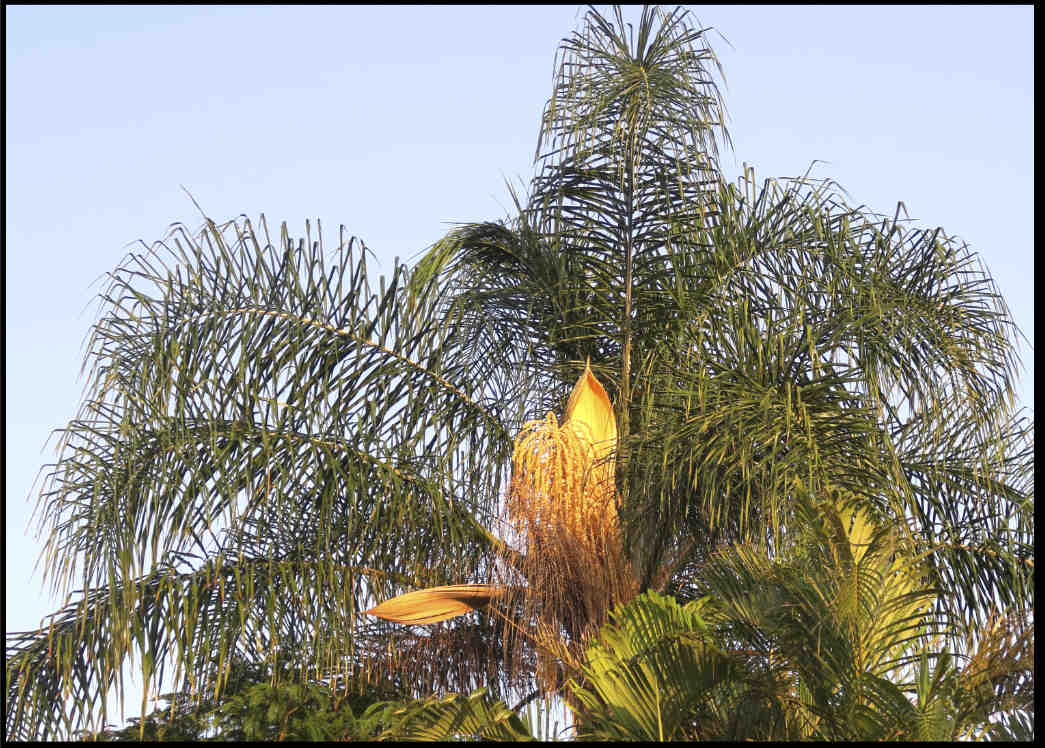Arecaceae > subfamily Arecoideae > tribe Cocoseae > subtribe Attaleinae.
Also in this subtribe is the Cocos genus.
Native to South America there are 70 species.
Most have a solitary stem, a few form clusters or have an underground stem.
They are small to over 30 m high and may have a swollen base.
Petiole bases remain for a time after the blades fall.
When the bases fall they leave marked circular or oblique leaf scars.
Over time the scars become less obvious and the lower part of the trunk is smooth.
There may be close vertical parallel streaks or grooves.
The pinnate leaves are mostly spirally arranged.
The petioles merge into the fibrous leaf sheaths.
Fibres are mostly soft but in some species they are spine-like.
The sheaths are open so there is no crown shaft.
The petiole edges may also have short fibres or rarely spines.
The upper surface of the petiole is flat or grooved, the lower round or angled.
There may be hairs, scales or a waxy coating on the petiole and midrib.
The long or short midrib (rachis) is straight or curved.
The leaflets are arranged in groups and grow in more than one plane.
Thin to wide linear leaflets can be straight or curved with a pointed, blunt or split tip.
They are reduplicate with the edges folded down (back).
There are usually large scales (rameta) on the lower midrib or a few hairs.
Once branched axillary inflorescences are much shorter than the leaves.
They are on a short to long peduncle that may have hairs or scales.
Inflorescences are protected by a short tubular prophyll and 1 peduncular bract.
The tubular peduncular bract becomes woody and boat-shaped.
It splits lengthwise but does not fall for a long time.
Inflorescences are erect then become pendulous as the fruit develop.
The midrib has few to many branches (rachillae).
The often zigzag rachillae have spirally arranged flowers.
Flowers are in groups of 3 with a central female between 2 males.
The upper part of the rachillae may have solitary females and the lower part solitary males.
Directly attached to the rachillae, flowers have 3 roughly triangular sepals.
The 3 much longer ovate or oblong petals have pointed tips.
Male flowers have 6 stamens, in 2 whorls, with long anthers on short filaments.
There is a tiny 3-lobed or no pistillode.
The larger or smaller females have 6 staminodes fused in a ring around the base of the ovary.
The ovary has 3 locules each with 1 ovule but 2 usually abort.
The 3 stigmas, directly attached to the ovary curve back.
The fruit are small to large drupes under 4 cm.
The mainly orange fruit usually have only 1 seed.
The attached sepals, petals and staminodal ring may grow with the fruit.
Under the skin is a layer with longitudinal fibres.
The seed has a hard woody coat.
J.F.


